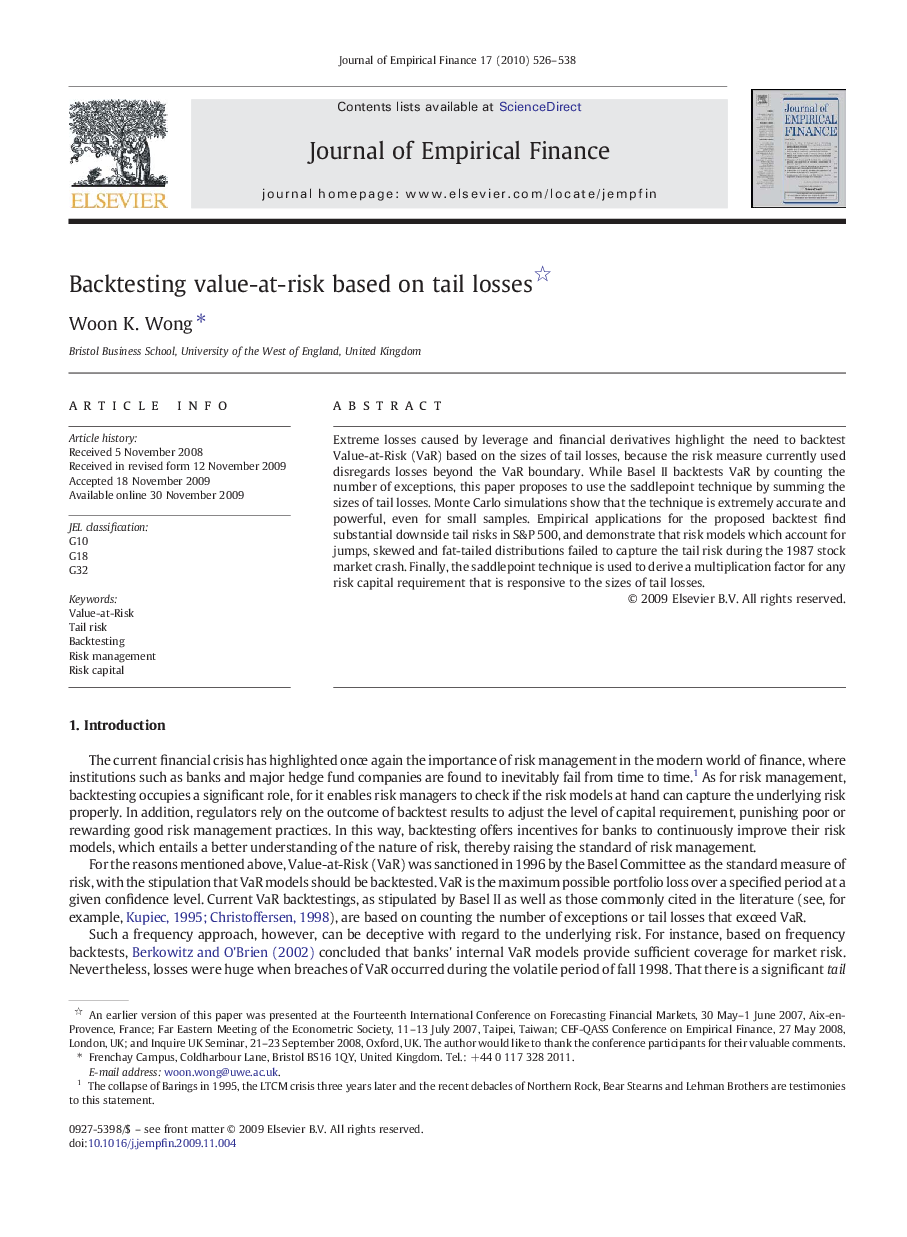| Article ID | Journal | Published Year | Pages | File Type |
|---|---|---|---|---|
| 958583 | Journal of Empirical Finance | 2010 | 13 Pages |
Extreme losses caused by leverage and financial derivatives highlight the need to backtest Value-at-Risk (VaR) based on the sizes of tail losses, because the risk measure currently used disregards losses beyond the VaR boundary. While Basel II backtests VaR by counting the number of exceptions, this paper proposes to use the saddlepoint technique by summing the sizes of tail losses. Monte Carlo simulations show that the technique is extremely accurate and powerful, even for small samples. Empirical applications for the proposed backtest find substantial downside tail risks in S&P 500, and demonstrate that risk models which account for jumps, skewed and fat-tailed distributions failed to capture the tail risk during the 1987 stock market crash. Finally, the saddlepoint technique is used to derive a multiplication factor for any risk capital requirement that is responsive to the sizes of tail losses.
